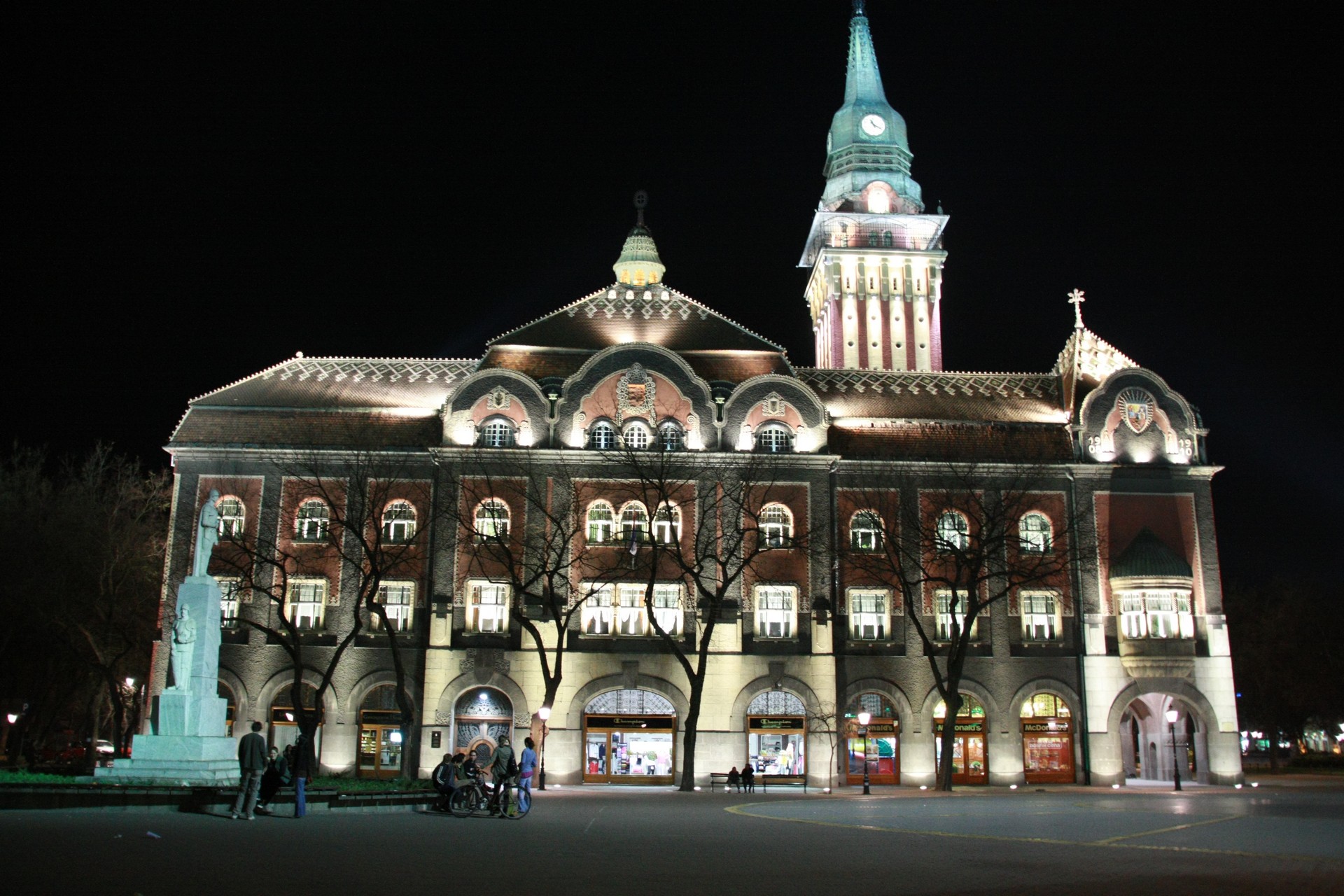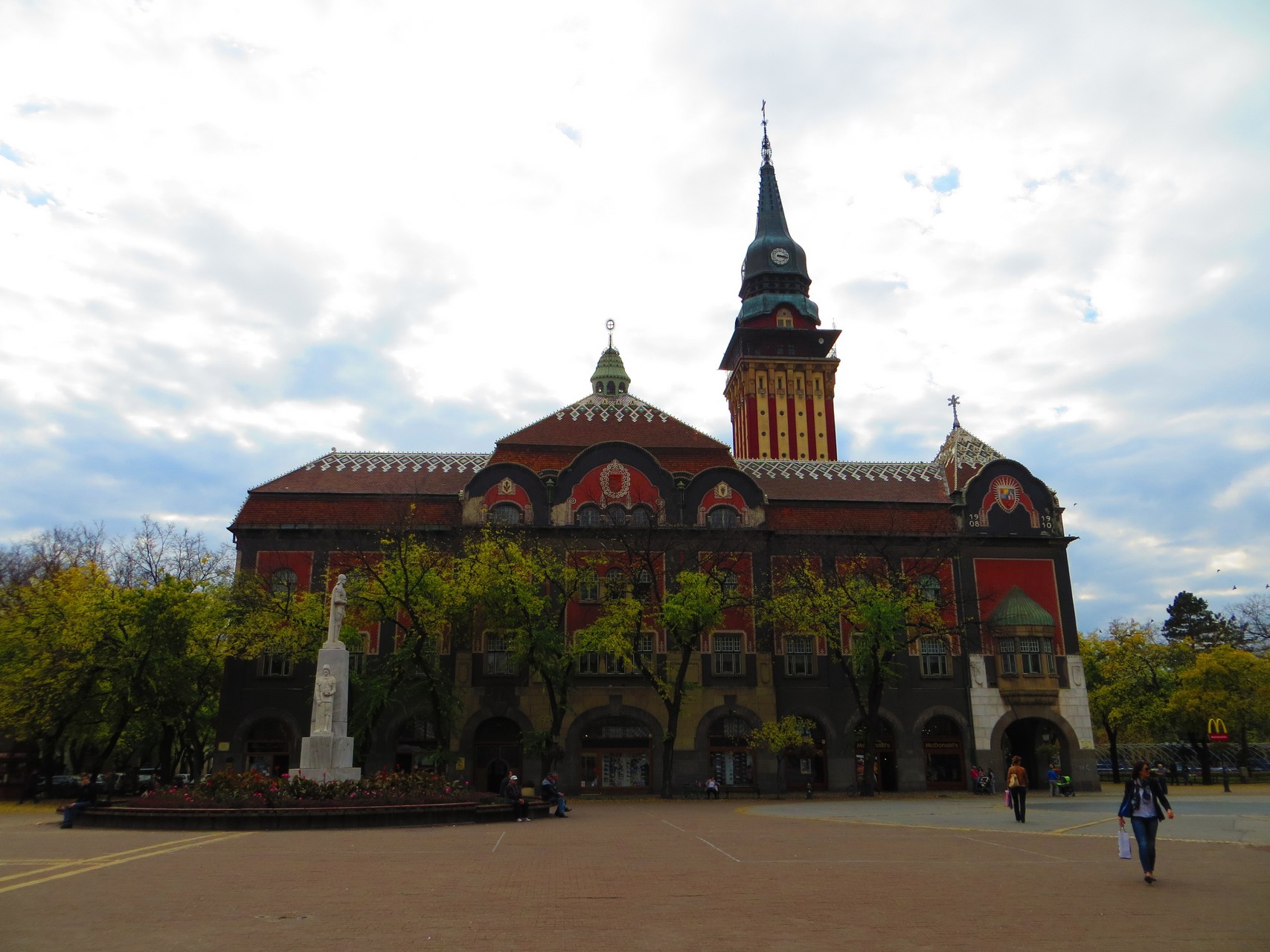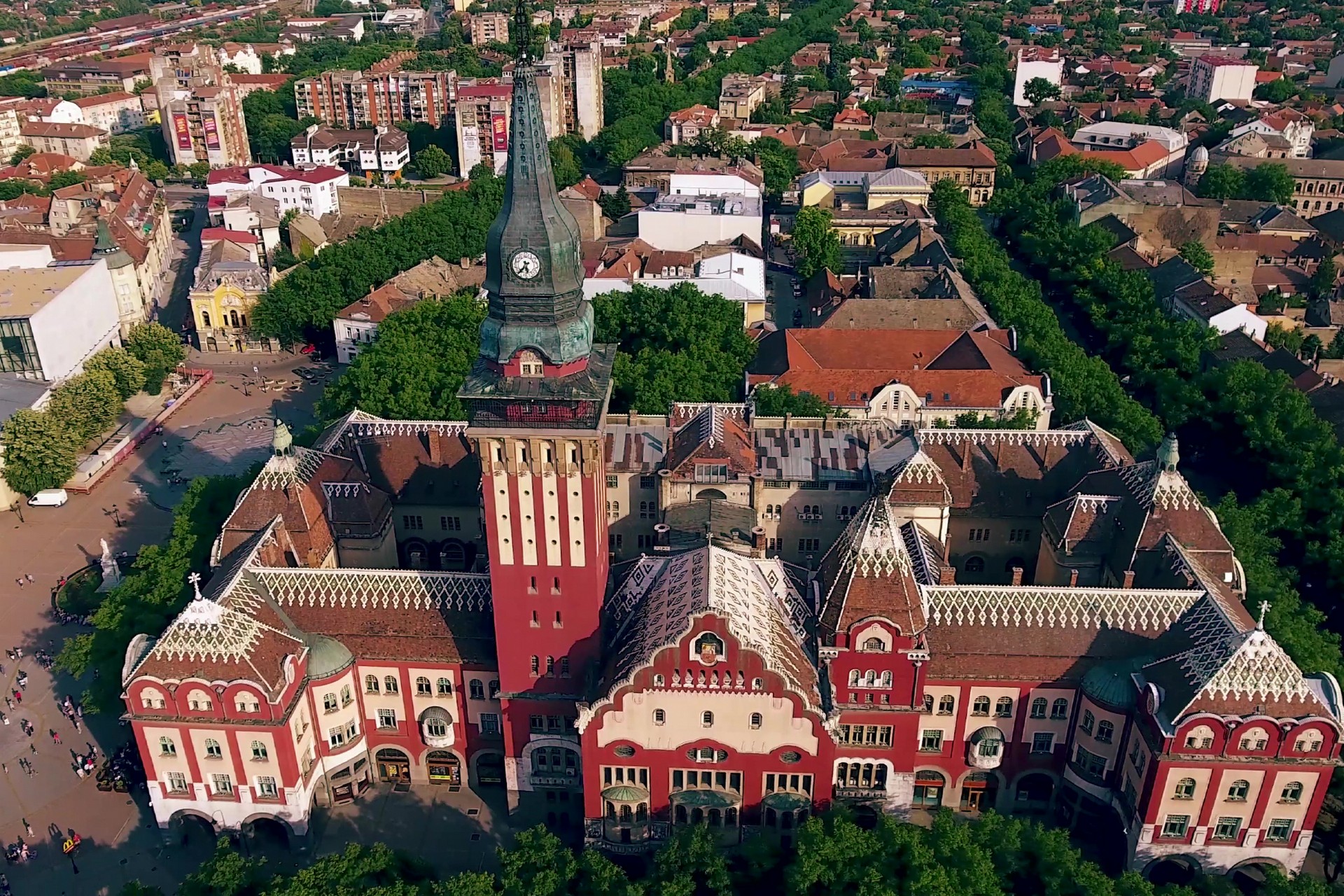- Unlike many European cities, Subotica has a central district that is not dominated by a cathedral or a church, but by a City Hall. Because of its location, size, and ornate Hungarian Art Nouveau architecture, the City Hall has become a landmark, the center and most iconic symbol of Subotica.
- It was built between 1908 and 1910, with the interior decoration completed in 1912.
- The City Hall was designed by Marcell Komor and Dezső Jakab, prominent Jewish architects from Budapest.
- They were the best students of Ödön Lechner (1845-1914), the founder of the Hungarian Art Nouveau style in architecture.
- The City Hall with its size, composition and innovations (electric lighting, central heating, elevator…) precisely signifies the strength and tendency of growth and development.
- Subotica was in economic progress and the citizens of that time wanted to show their success. Similar to that, by building the Synagogue, Jewish community wanted to show their presence in the city and their importance for the city.
- The most important values of this building are probably its functionality and modernity, as well as its synthesis of various artistic disciplines, including architecture, painting, and applied arts. But what leaves visitors breathless is its lavish ornamentation.


